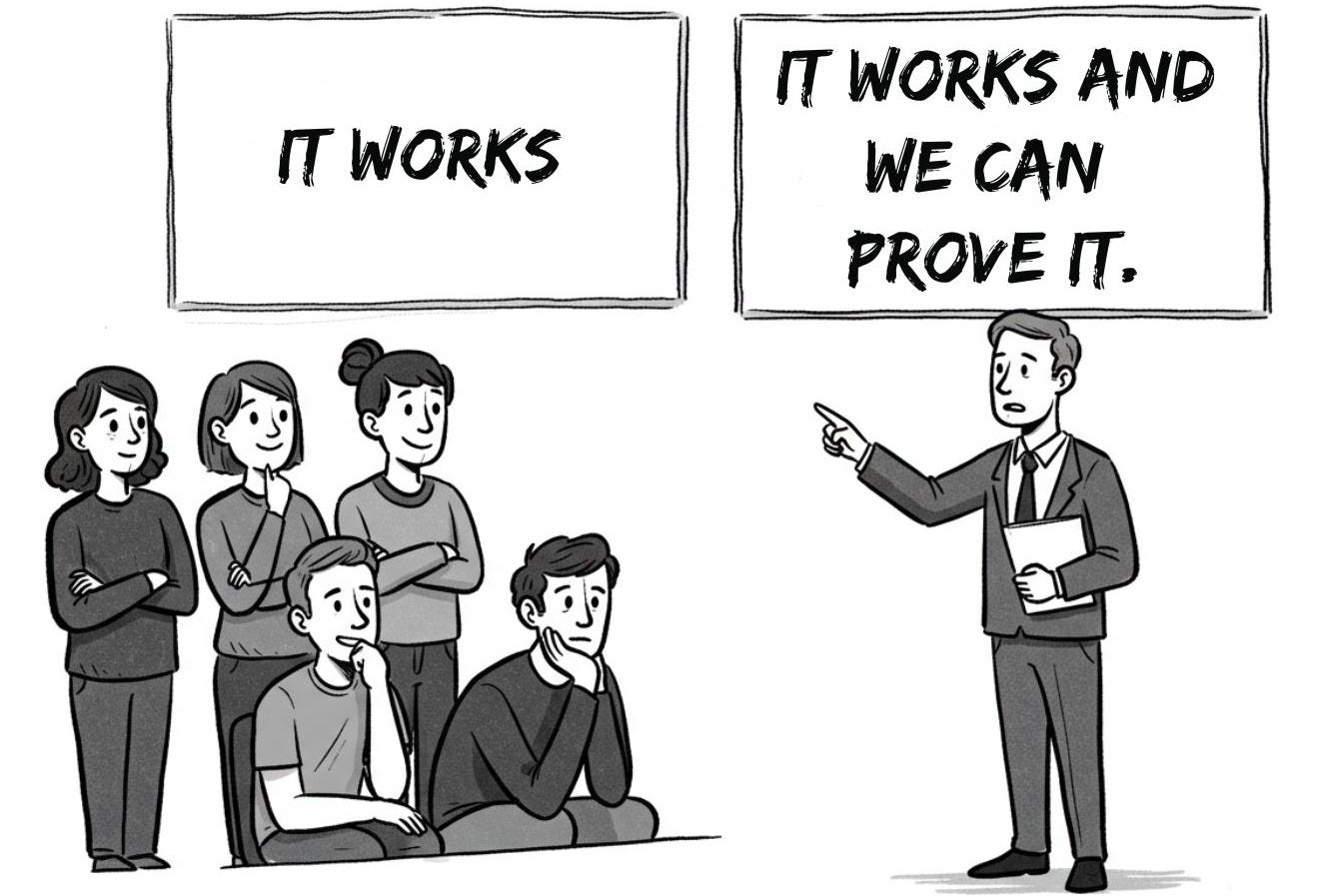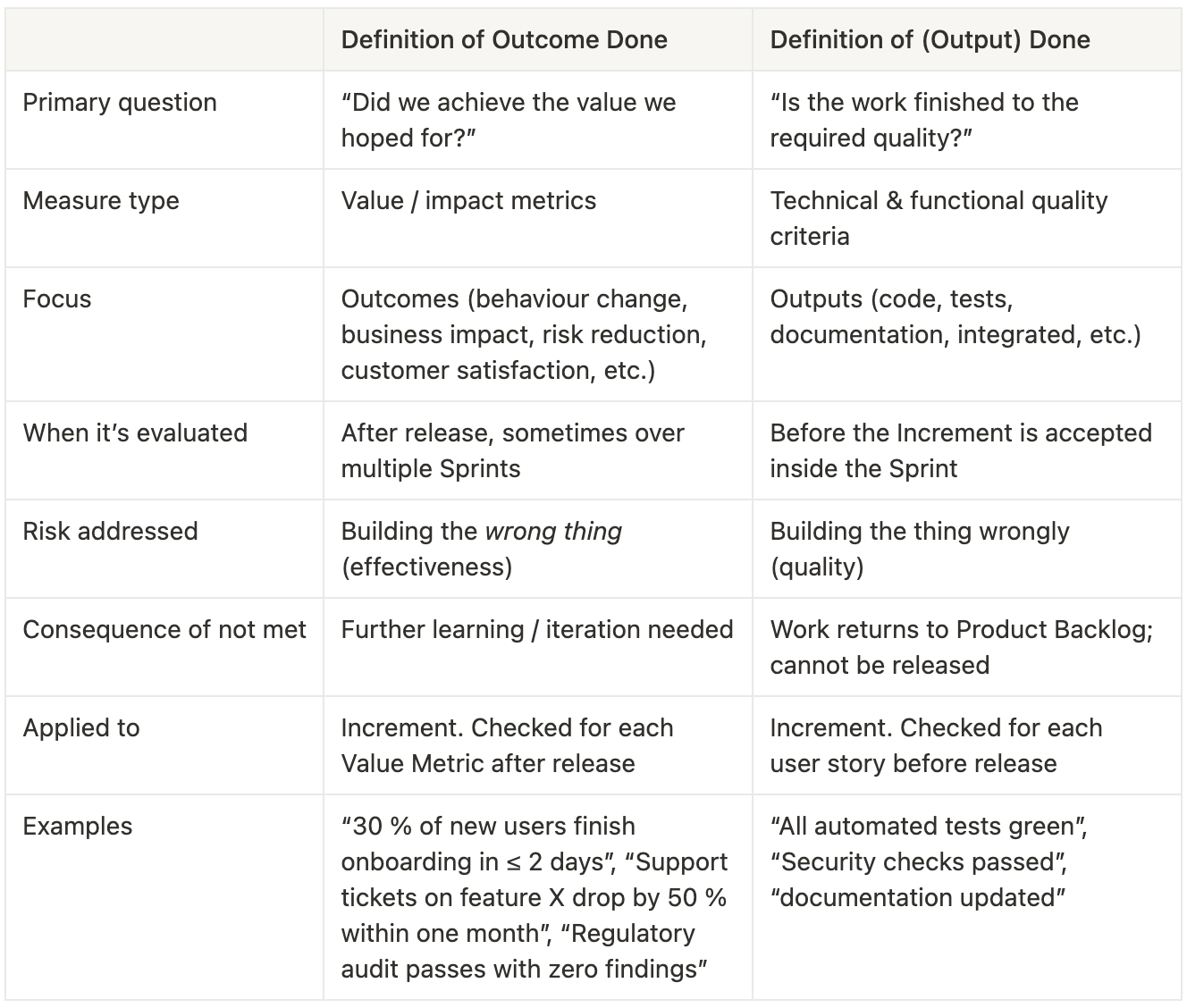What is Definition of "Outcome" Done? (Part-1)
🎁 Part-1 of the 3 part DoOD series. What it is? How it is different? Why was it needed? What are some examples? Includes Notion Worksheet
Hello 👋, It’s Vibhor. Welcome to the 🔥 paid member only🔥 edition of Winning Strategy: A newsletter focused on enhancing product, process, team, and career performance. Many subscribers expense this newsletter to their Learning & Development budget. Here’s an expense template to send to your manager.
“An Increment is Done when it works. It is Outcome Done when it works and we can prove it.”
— my elevator pitch to executives
Scrum Alliance recently shook things up with the Scrum Guide Expansion Pack, introducing the concept of "Definition of Outcome Done." A new concept that is separate from the familiar "Definition of Done" (now rebranded as "Definition of Output Done”).
If you're wondering what this means for your teams, you're not alone. Implementing this new approach wasn’t exactly smooth sailing for us either.
So how hard could it be?
Let’s just say there were more bumps than we expected. We made mistakes, and we learned some hard lessons about what it takes to move from measuring activity to measuring impact.
In this 3-part series on the NEW Definition of Outcome Done, I will share the following:
Part 1: What is Definition of Outcome Done? How is it different?
Part 2: How did we conduct our first workshop to define the Definition of Done?
Part 3: We failed in our first attempt to implement the Definition of Outcome Done. Why did we fail? How did we recover?
🎁 There is also a Notion based Worksheet included that you can download near the end of the post.
There’s a lot to cover, so let’s get started.
Got an urgent question?
Get a quick answer by joining the subscriber chat below.
What is Definition of Outcome Done?
“The Definition of Outcome Done is a commitment. It describes the observable evidence measures (quantitative or qualitative) required to demonstrate realized benefits, often referred to as value validation.”
— Scrum Guide Expansion Pack 2025
Although I enjoy reading it, this definition of the “Definition of Outcome Done” can be somewhat challenging to understand.
The simplest way (I have found) to understand this concept is by comparing it with the old and familiar Definition of Done, the DoD. Here’s how.
If,
Definition of Done provides Potentially Shippable Increment
then,
Definition of Outcome Done provides Confirmed Valuable Increment
where,
Value is the Quantitative or Qualitative Impact experienced by:
Customer, or
End-User, or
Product Stakeholders, or
Business Stakeholders, or
Scrum Team
How is it different from DoD?
The original Definition of Done (kept in the 2025 pack as Definition of Output Done) is a shared checklist that tells the team when an Increment is complete and meets the required “quality” standard.
Difference between the two:
How the two definitions work together
Before Release
Developers apply the Definition of (Output) Done to turn selected PBIs into a high-quality Increment.After Release
The Scrum Team and stakeholders “inspect evidence” against the Definition of Outcome Done.If the outcome is met → learning is captured
If not → hypotheses, backlog and possibly Product Goal are adapted
Every Scrum team has:
One DoD ⇒ “Is it potentially releasable?”
One DoOD ⇒ “Did the release create the expected impact?”
Why did the Scrum Alliance decide to add it now?
Several theories are circulating about why the Scrum Alliance introduced the “Definition of Outcome Done”.
Regardless of what people are saying, I believe it boils down to three key reasons:
1. It was high time. Scrum needed a change.
Scrum has served the software development world for decades. The landscape has shifted. Teams are now expected to deliver more than just working software. They need to deliver software with measurable value. The “Definition of Outcome Done” will address this growing expectation.




